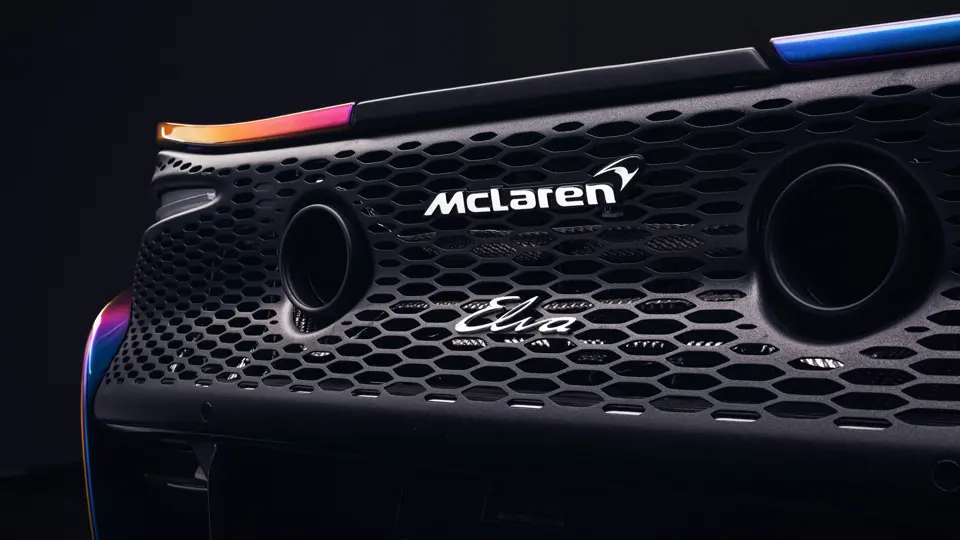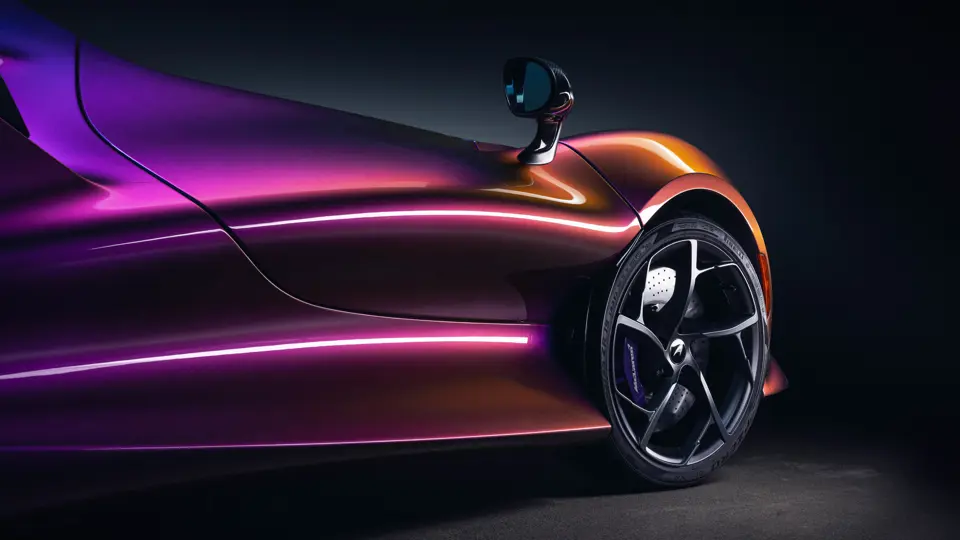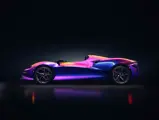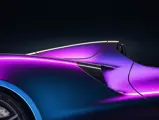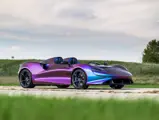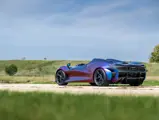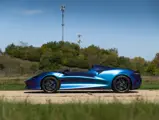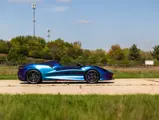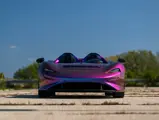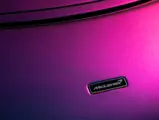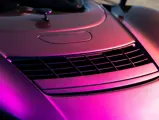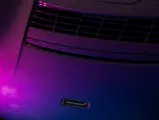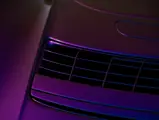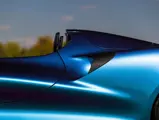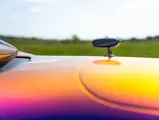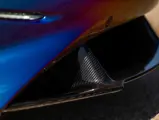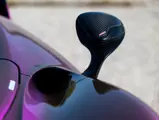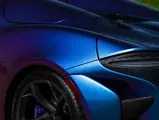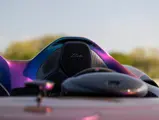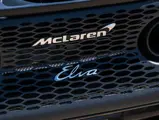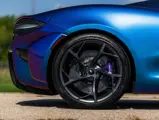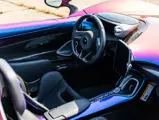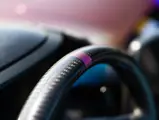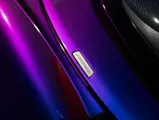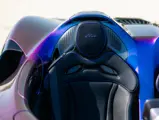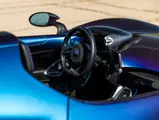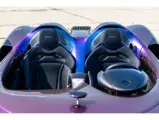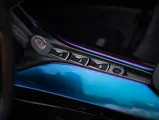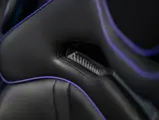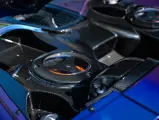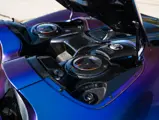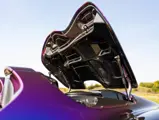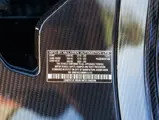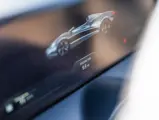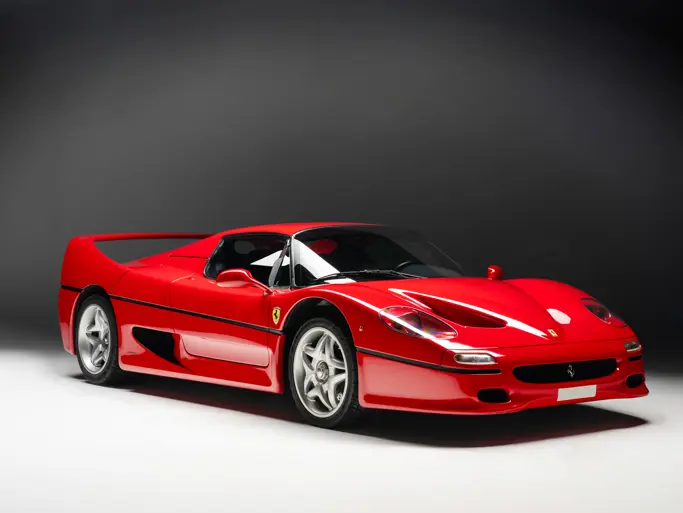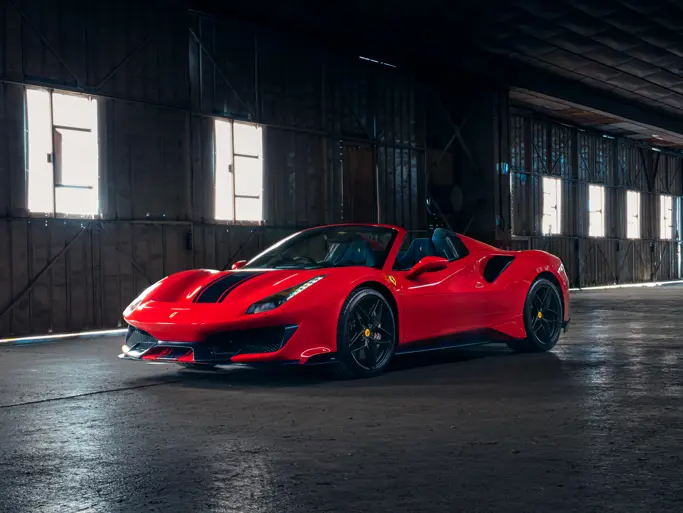
2021 McLaren Elva
{{lr.item.text}}
$1,517,500 USD | Sold
{{bidding.lot.reserveStatusFormatted}}
- The lightest, most extreme road car McLaren has ever produced, delivering the purest possible driving experience
- Number 122 of 149; delivered new to McLaren Charlotte
- Presented in showroom condition, showing just 93 miles on the odometer at cataloguing time
- Equipped from new with more than $102,000 in bespoke options from McLaren Special Operations
- Finished in stunning, iridescent Pacific Colourstream, a $37,898 MSO option
The Elva is McLaren’s first open-cockpit road car and the latest member of the British automaker’s elite Ultimate Series, which embodies the absolute forefront of technology. Like preceding models in the series—the McLaren P1, Senna GTR, and Speedtail—the Elva is the most extreme expression of what a car can be. It is also the lightest road car McLaren has ever produced and was built exclusively as a roadster to deliver the purest possible driving experience. Only 149 were produced.
Designed to foster a deep connection between the driver, the car, and the elements, the Elva not only lacks a roof, it also does not have side windows or a windshield—though the latter could be ordered as a factory option in most markets. McLaren devised a special system of ducts and deflectors to route air around the cockpit, creating a pocket of calm, free from wind buffeting. This Active Air Management System (AAMS) channels air through a central inlet in the nose of the car and out through vents in the clamshell hood. A discreet carbon-fiber deflector at the leading edge of the hood vent deploys automatically as the vehicle’s speed increases to help direct airflow around the cabin in a 130-degree radius.
At the Elva’s core is a superlight carbon-fiber monocoque so incredibly strong that it does not require the additional strengthening typically needed in open-roof vehicles built from aluminum or steel. With a curb weight of 2,798 pounds, the Elva is the lightest road car McLaren has ever produced, thanks to obsessive weight-saving efforts, such as adapting the braking system from the Senna with titanium pistons in the calipers, shaving a total of 2.2 pounds across the vehicle.
The all-carbon-fiber body is a showcase of advanced design and engineering. A single-piece clamshell hood only 1.2 millimeters thick wraps around the entire front of the vehicle. Equally impressive are the side panels, stretching over 10 feet in length from the front wheels to the active rear spoiler. The rear tonneau is also a single piece of carbon-fiber, reducing weight at one of the highest points of the vehicle to help lower the center of gravity. It conceals stowage space and is secured with soft-close latches.
The Elva name celebrates the Bruce McLaren-designed M1A and subsequent McLaren-Elva M1A, M1B, and M1C of the 1960s. Produced as customer versions of McLaren’s innovative Group 7 racers, these sports cars embodied many of the pioneering design and engineering principles integral to McLaren road cars today. The Elva’s striking design took inspiration from these classics, with its low nose and pronounced front fenders providing visual drama while also enhancing forward vision.
Ferocious speed and extraordinary acceleration come not only because of the car’s light weight, but also its mid-mounted 4.0-liter twin-turbocharged V-8. Part of the same family of engines that powers the McLaren Senna and Senna GTR, it features a flat-plane crankshaft, dry-sump lubrication, and lightweight camshafts, connecting rods, and pistons. Power flows to the rear wheels through a seven-speed seamless-shift gearbox. Using the launch-control function, 0 to 62 mph comes in a breathtaking three seconds. Notably, the Elva is marginally quicker than the Senna to 124 mph, needing just 6.7 seconds. Torque is the same as that of the Senna at 590 pound-feet, but horsepower is increased to 802 brake horsepower, thanks to optimized cooling and exhaust systems—the latter being made of titanium and Inconel.
A chassis maximized for agility and feedback combines with the high output to create an incredibly enthralling driving experience. Electro-hydraulic steering provides unparalleled feel, while McLaren’s linked-hydraulic active suspension—with unique software, springs, and damper valving tailored to the vehicle’s light weight—keeps the car stable and comfortable on various road surfaces.
To highlight the driver’s connection to the elements, there is no clear demarcation between the exterior of the McLaren Elva and the interior. The curved upper section of the doors flows into the cabin, as do buttresses behind the seats. Specially constructed for the Elva, the seats feature a lightweight carbon-fiber shell and allow enough space to stand in the footwell for ingress/egress.
As if the Elva were not already special enough, McLaren offered near-infinite customization opportunities through its McLaren Special Operations (MSO) program, ensuring that no two would be alike. A portfolio of bespoke interior materials allowed customers to personalize according to intended use, with leathers in a range of finishes and levels of protection developed to meet open-cockpit requirements. Additionally, an innovative, multi-layered, synthetic material called Ultrafabrics offered an alternative to leather, providing durability, moisture resistance, and grip.
To minimize weight, the Elva did not come with an audio system as standard, but a bespoke one could be specified at no additional cost. Other no-cost options included five-spoke “Super-Lightweight” forged alloy wheels in lieu of the 10-spoke “Ultra-Lightweight” wheels fitted as standard, track-focused Pirelli P Zero Corsa tires rather than Pirelli P Zero tires, and a vehicle lift system. Six-point racing harnesses were also offered.
Additional personalization options available through MSO included interior color choices for the upholstery, virtually limitless exterior paint colors, and almost anything else, from a delicate pinstripe on the wheels to a blended full-body “contour” or “velocity” finish that mixed multiple colors across the length of the vehicle, all individually hand-painted by highly skilled MSO craftspeople.
Alternatively, customers could select a Gloss Visual Carbon Fiber Body, which exposed the perfectly aligned twill of the composite material. This could be further enhanced with a range of custom color tints for the exterior or interior carbon fiber. Meanwhile, the badges could be personalized with 18-carat white gold or platinum and inlayed with multiple layers of thin-ply carbon fiber, just 30 microns in depth, milled to resemble rippling water. Not to be neglected, the engine bay could be dressed up with a 24-carat gold heat shield.
This McLaren Elva was shipped new to McLaren Charlotte in North Carolina. Its original owner specified more than $102,000 in options, ensuring its uniqueness for all time. Perhaps the most striking of its many factory options is the $37,898 Pacific Colourstream paint, an iridescent, color-shifting shade of purple that transforms to hues of violet, magenta, and blue, depending on how light hits the car’s many sculpted features. Purple calipers, a $4,950 option, complement the dazzling exterior color. The mirror caps, instrument binnacle, shifter paddles in exposed carbon fiber, and brushed-finish metal trim in the cabin are also MSO options, as are the bespoke purple piping and stitching on the seats. Rounding out the list of exclusive options is the high-tech AAMS system ($8,489), which will ensure miles of pleasurable driving free from wind buffeting inside the cabin.
Showing only 93 miles on the odometer at the time of cataloguing, this remarkable machine remains very well-preserved in showroom condition. Replete with its original window sticker detailing its many factory options, this landmark roadster is ready for its next fortunate owner to enjoy, whether preserving it on display within a collection, driving with a companion about town, blasting solo down winding backroads, or making the most of its astounding engineering on a racetrack as company founder Bruce McLaren no doubt would’ve encouraged.


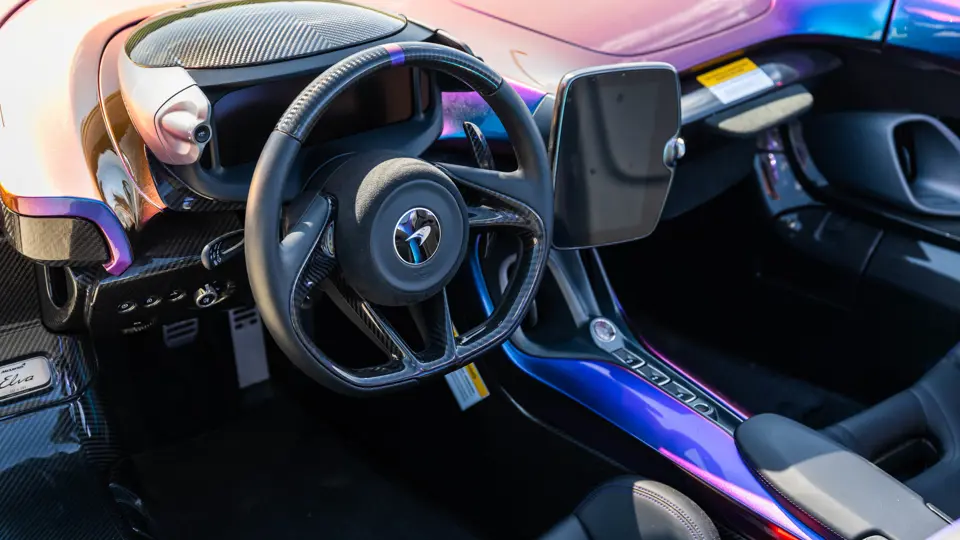

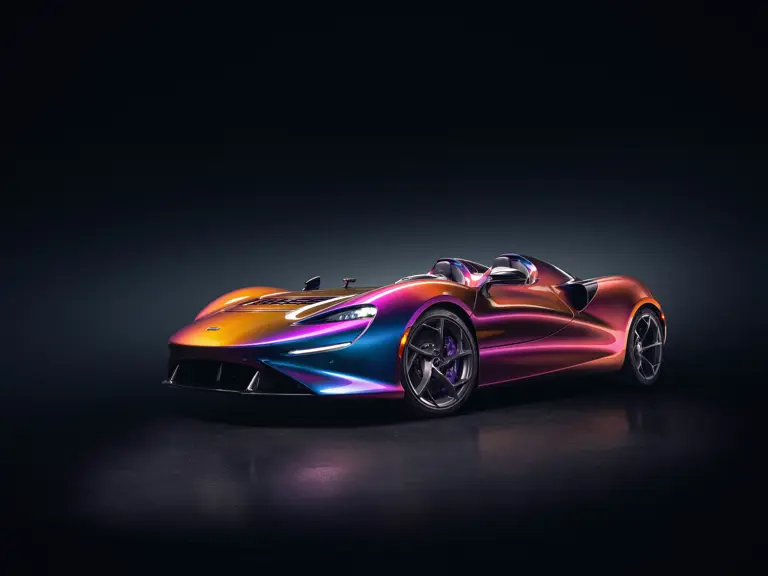
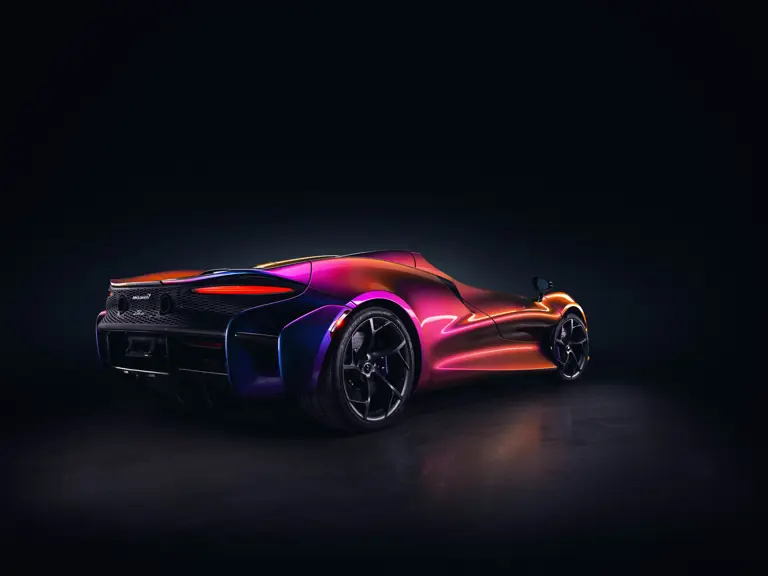
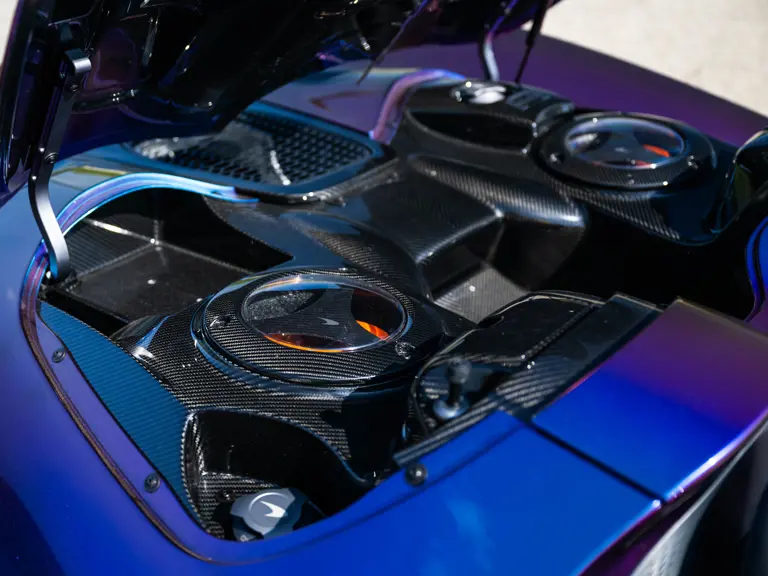
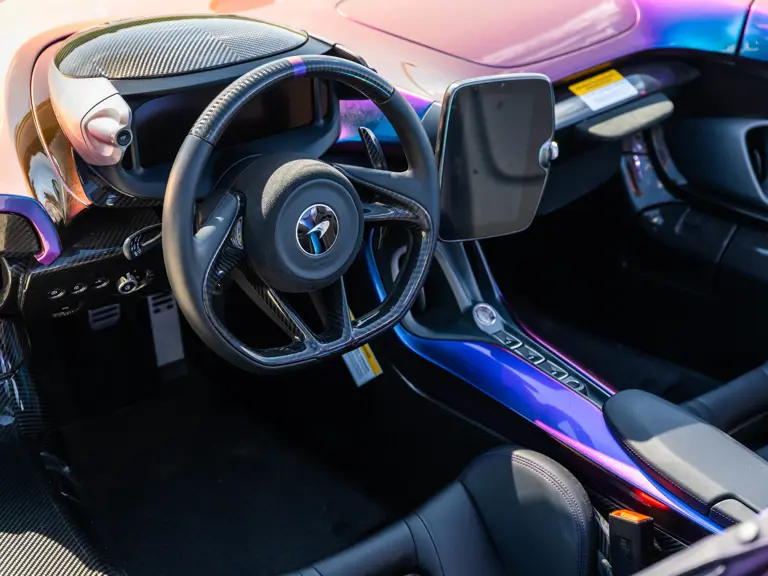


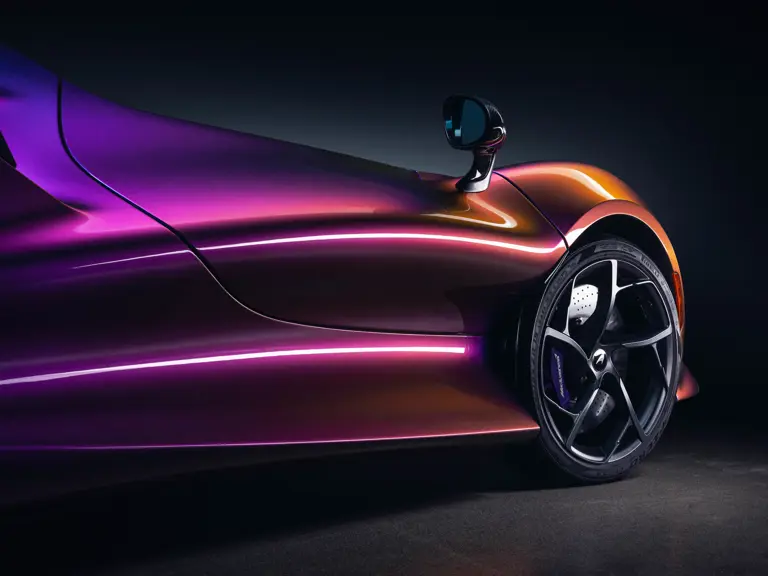

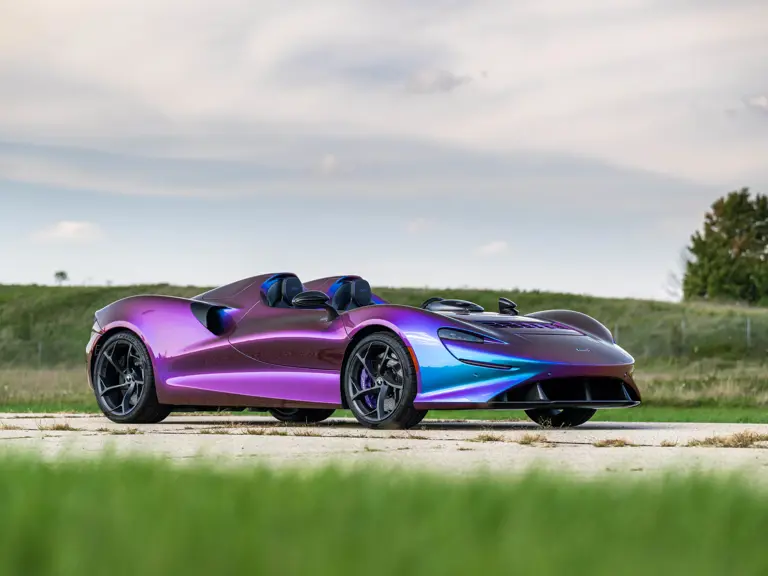

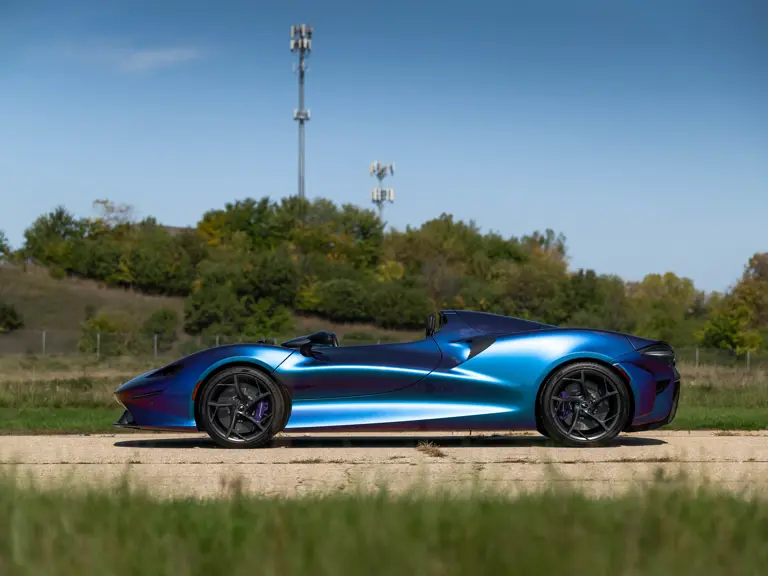
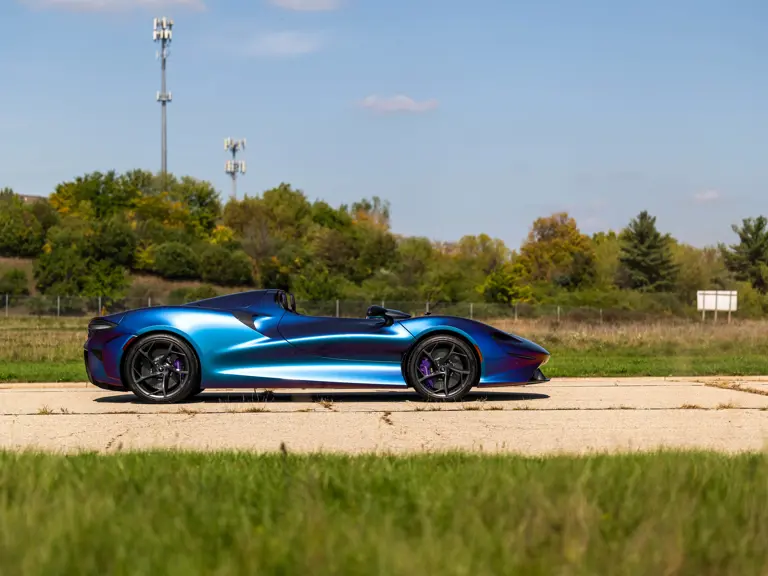

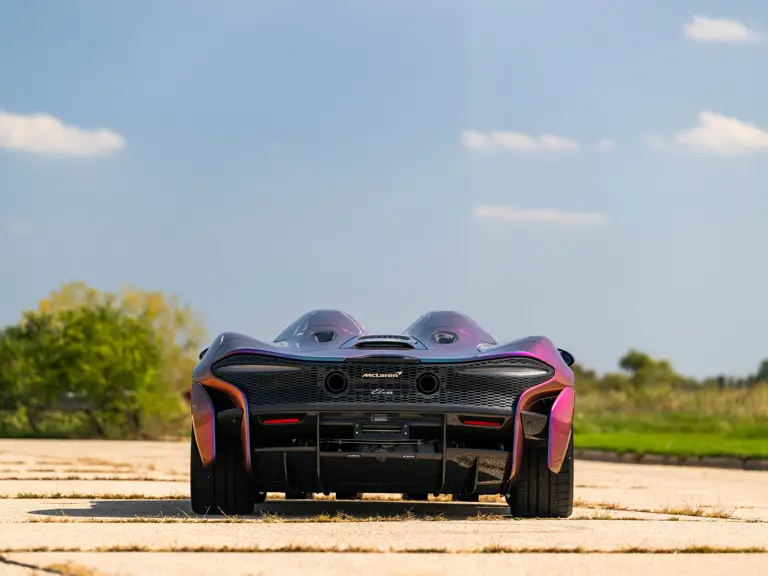

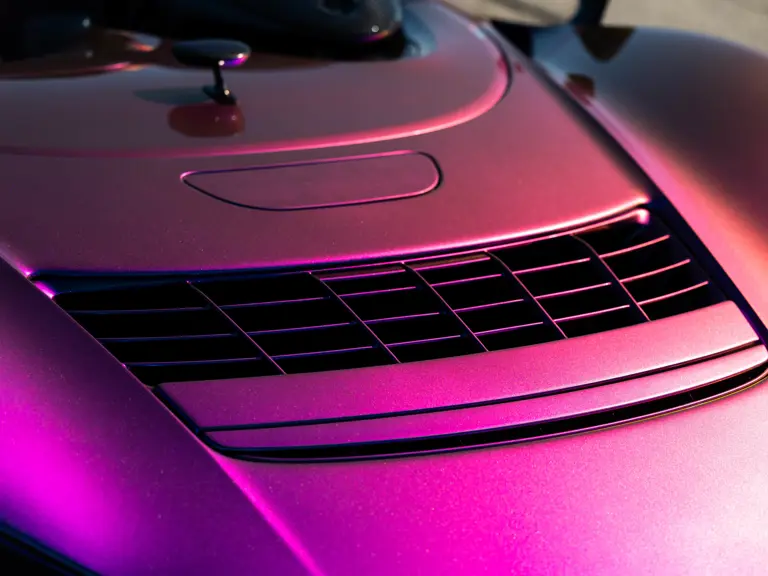
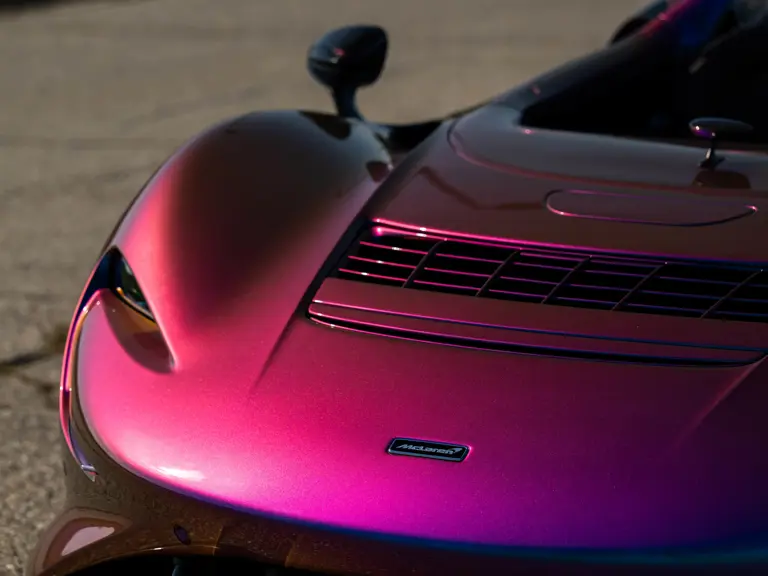
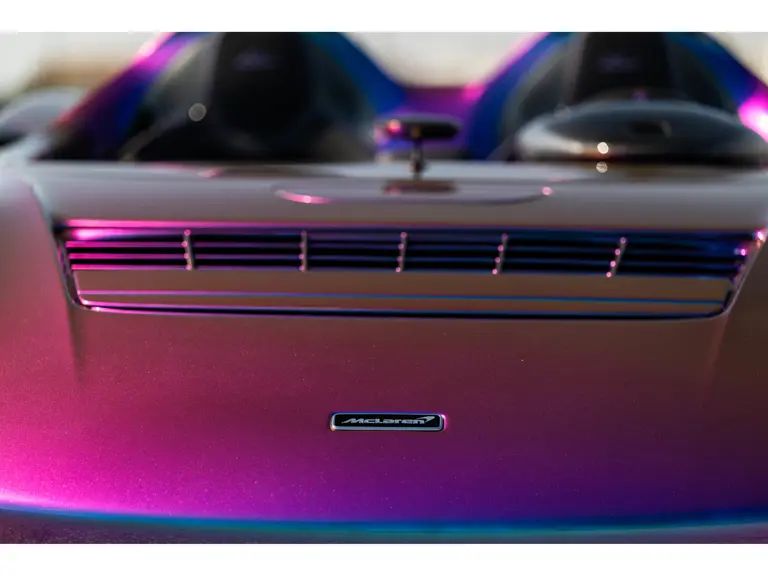
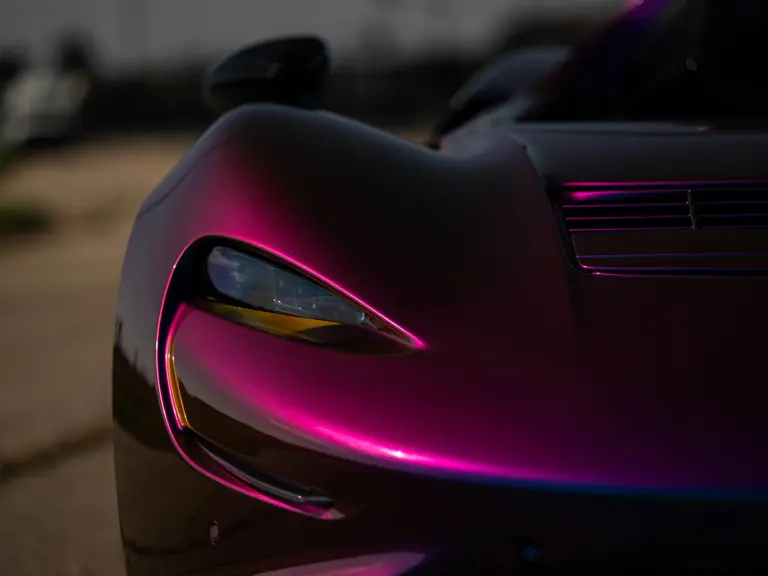
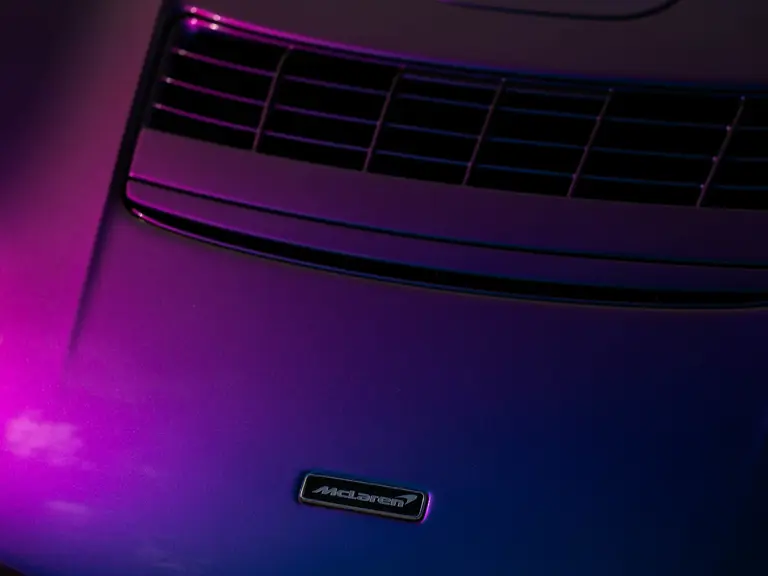
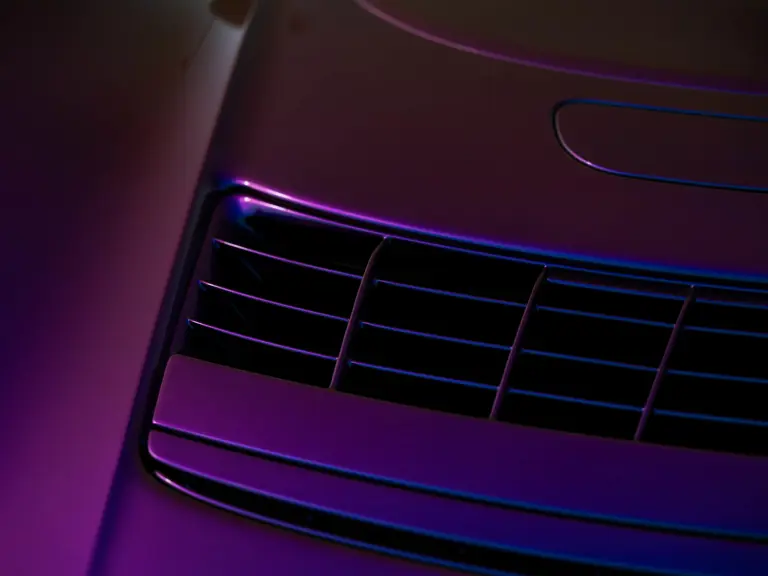


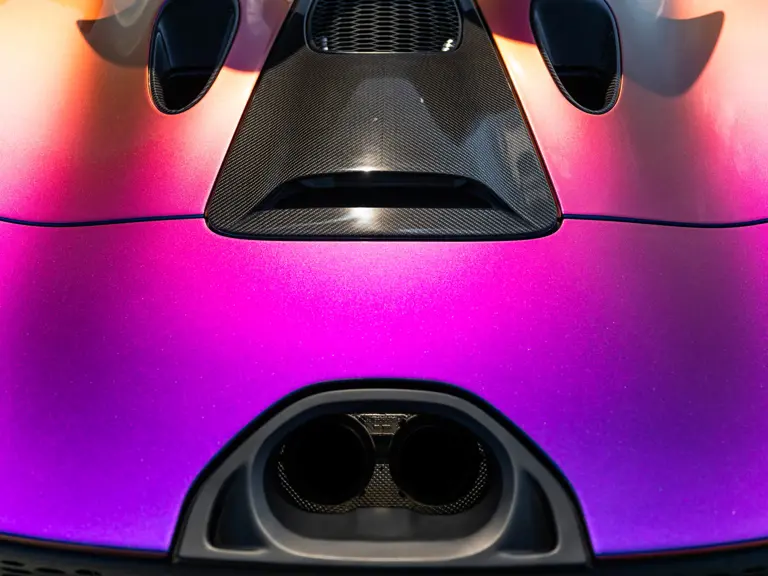
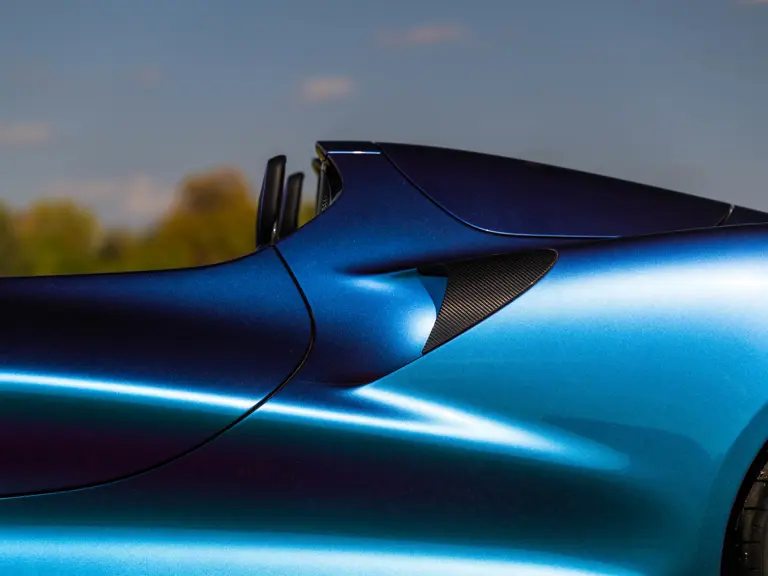


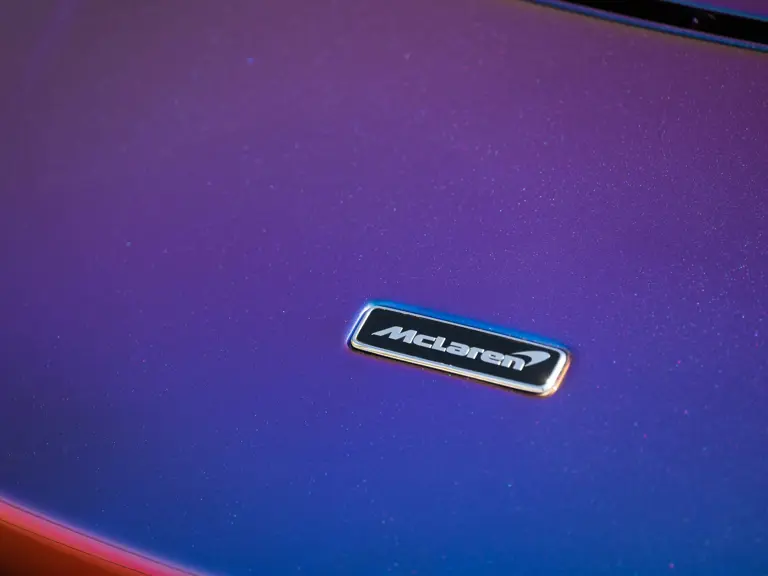

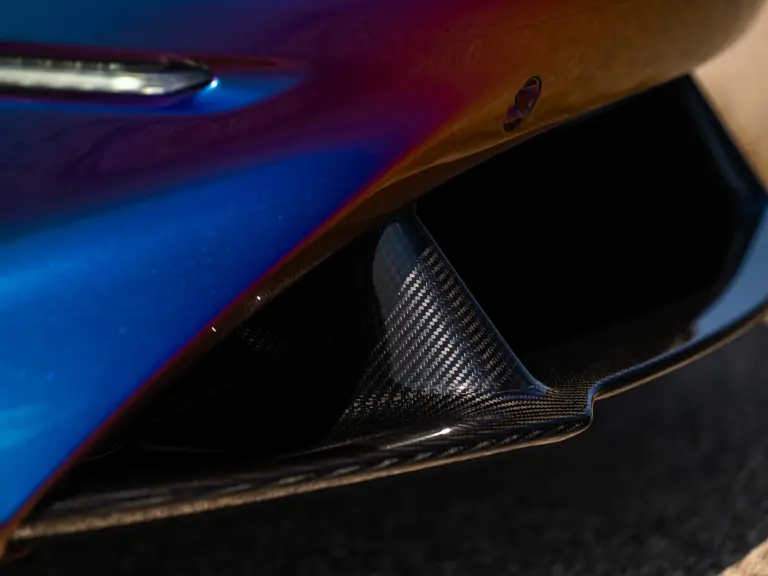
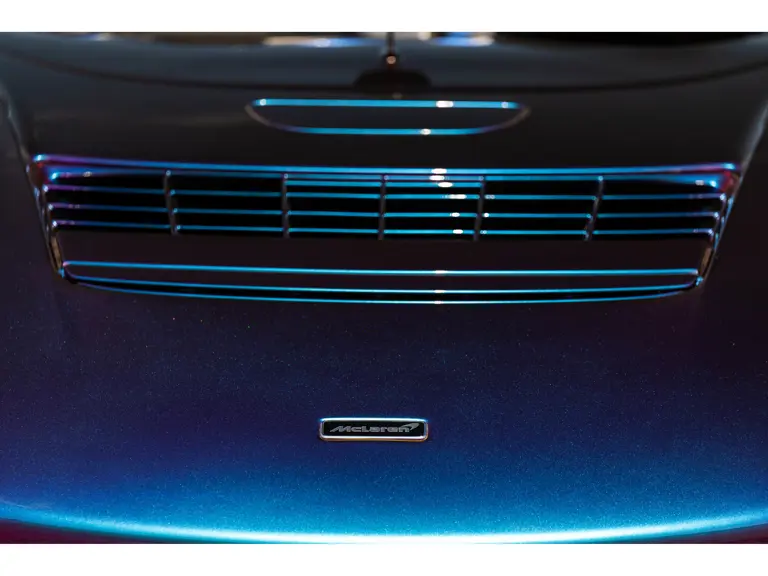

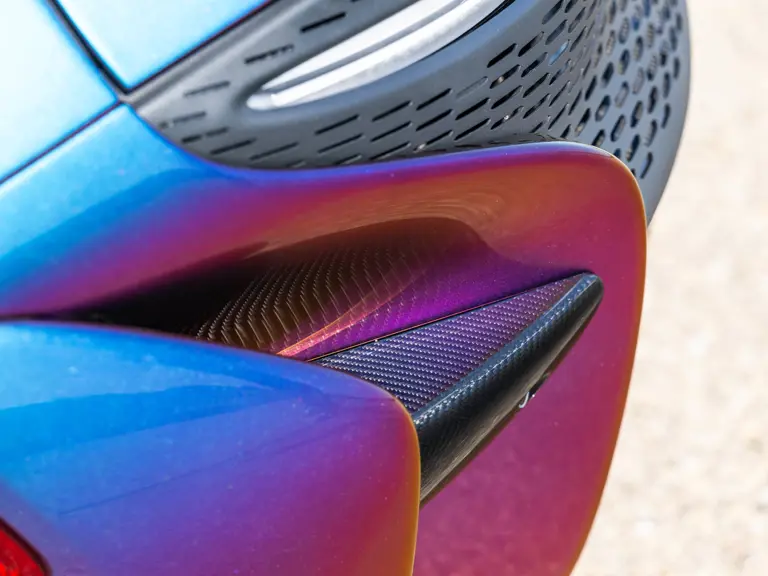
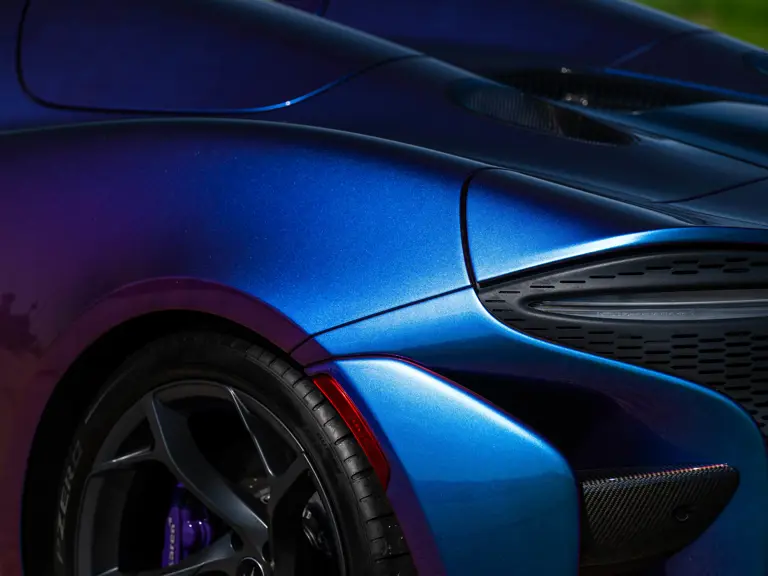
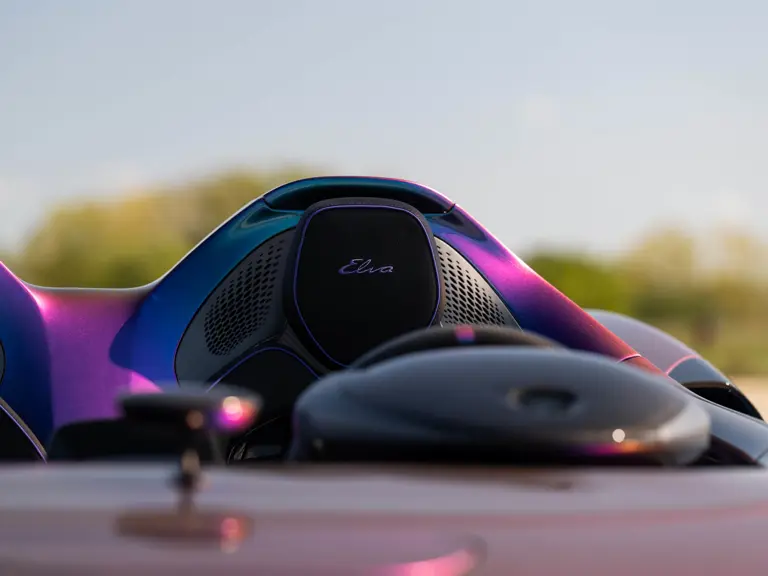
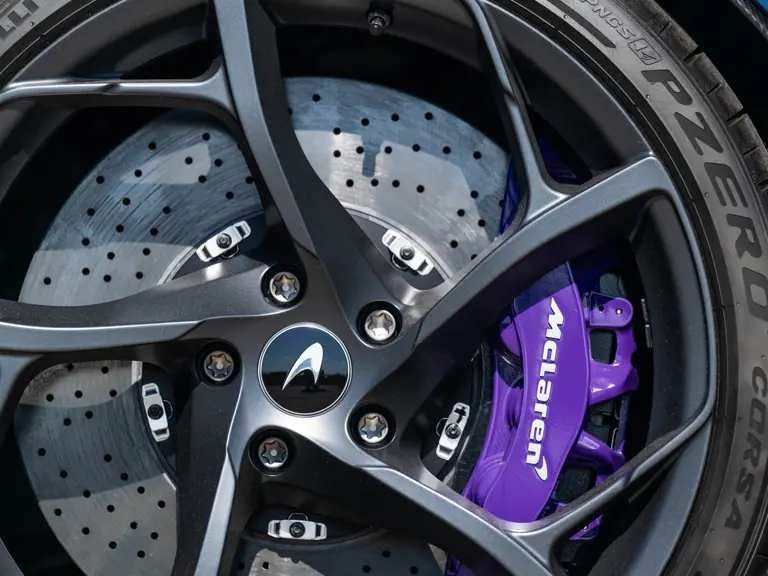

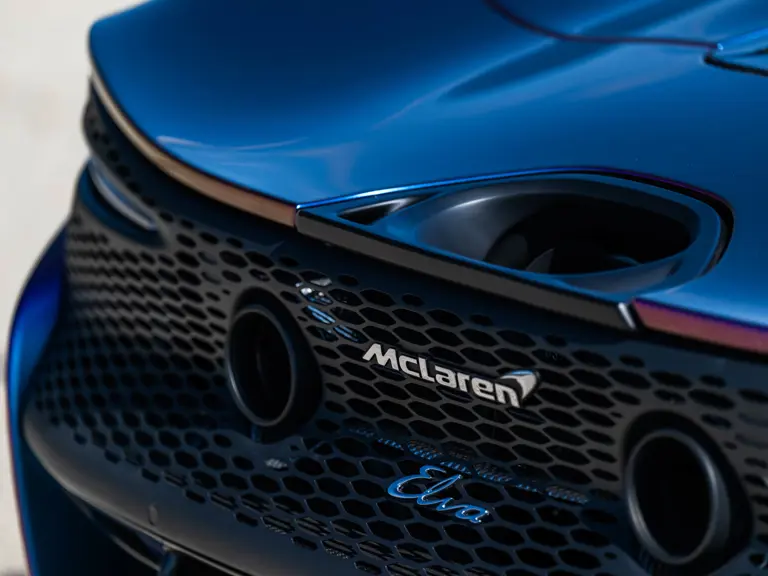


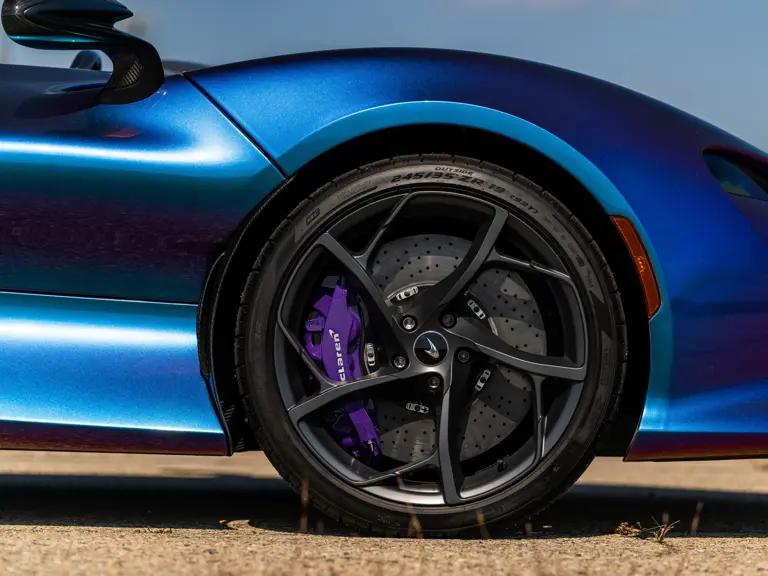

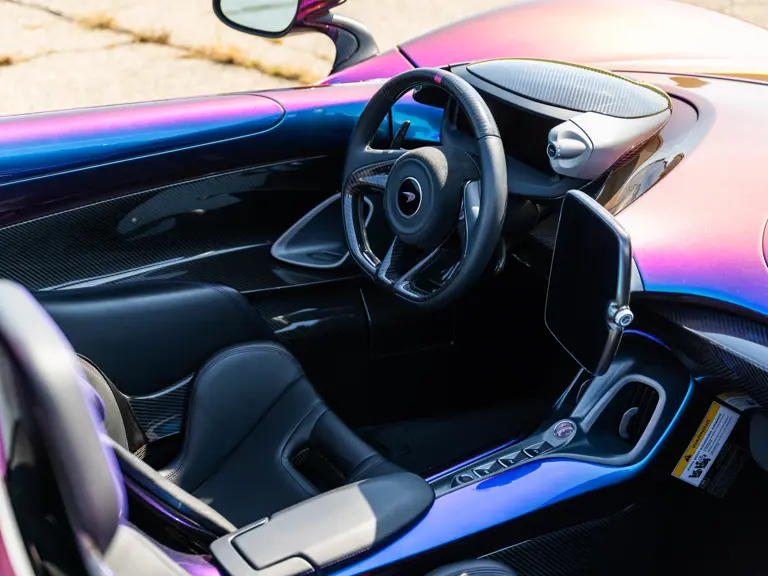



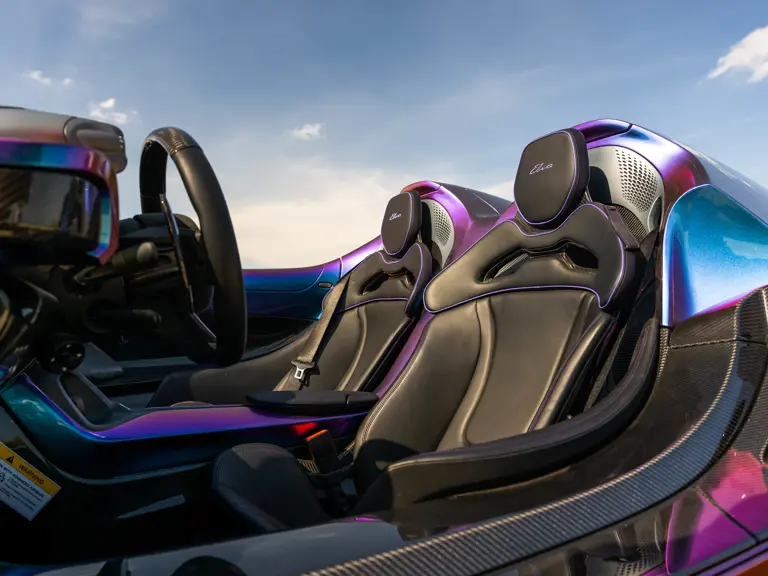
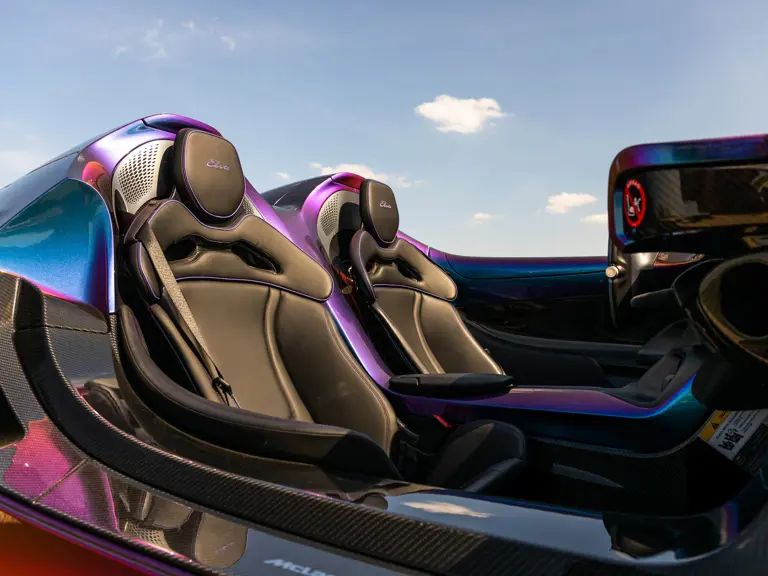
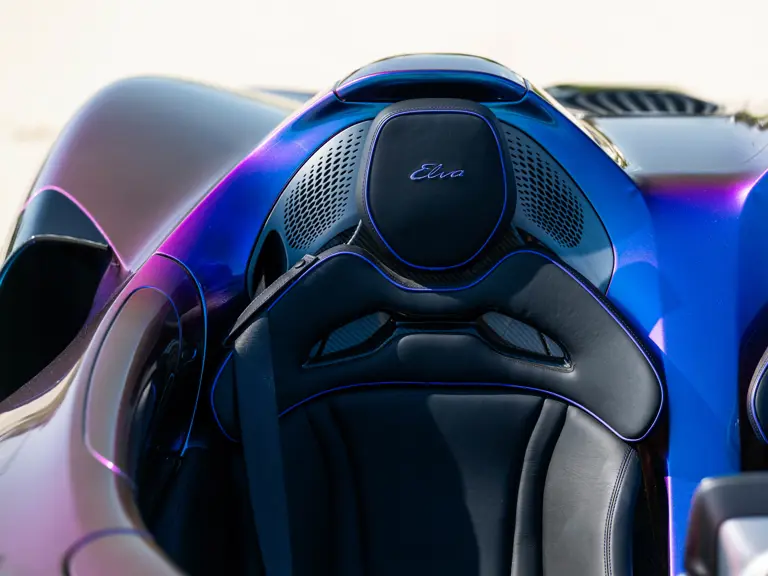



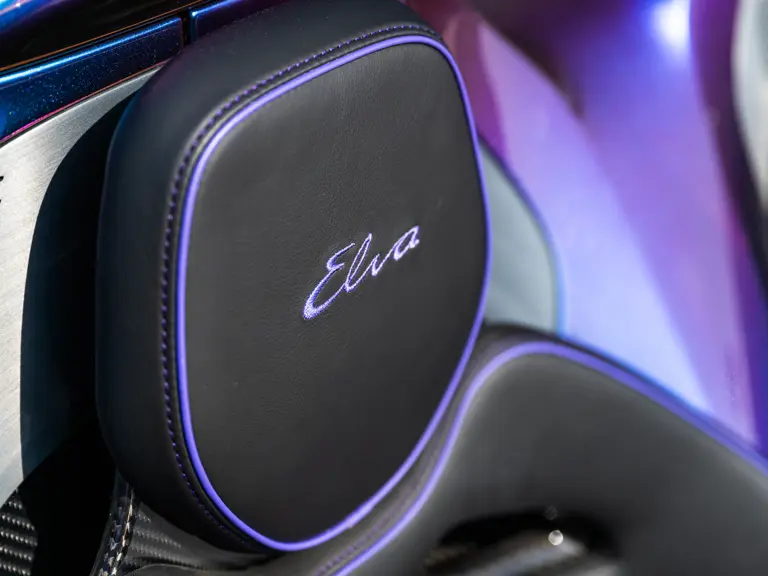
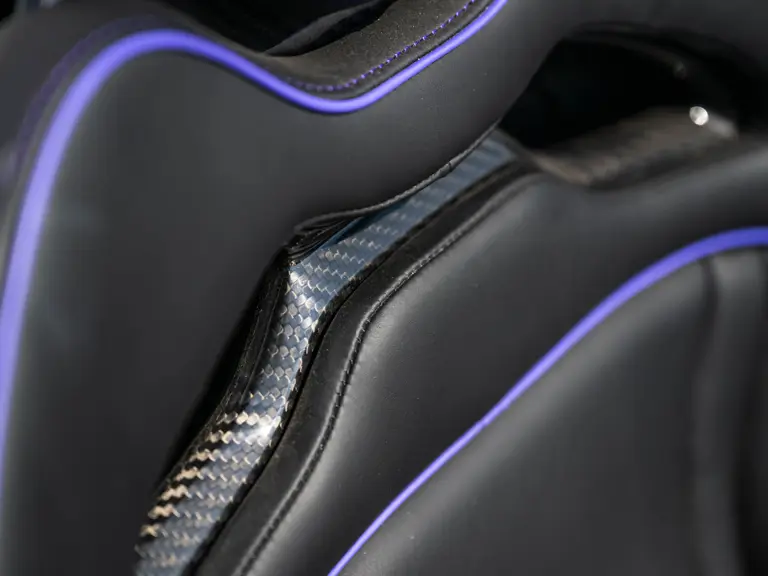
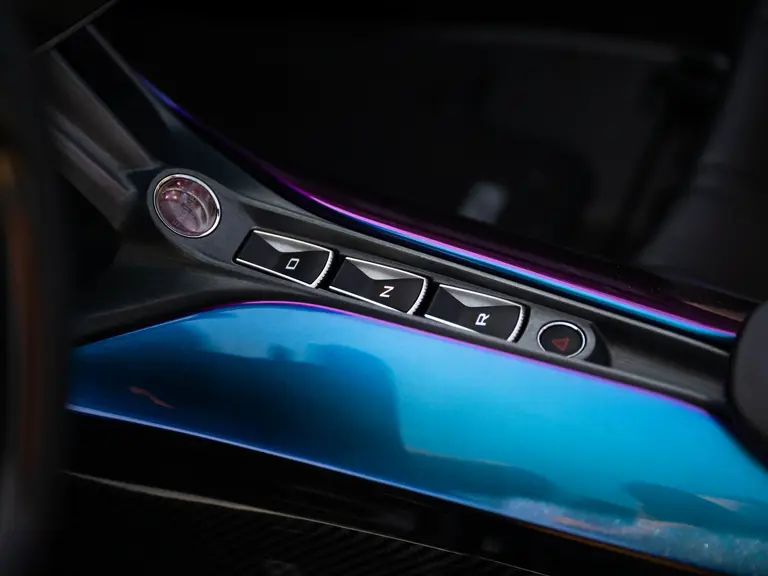

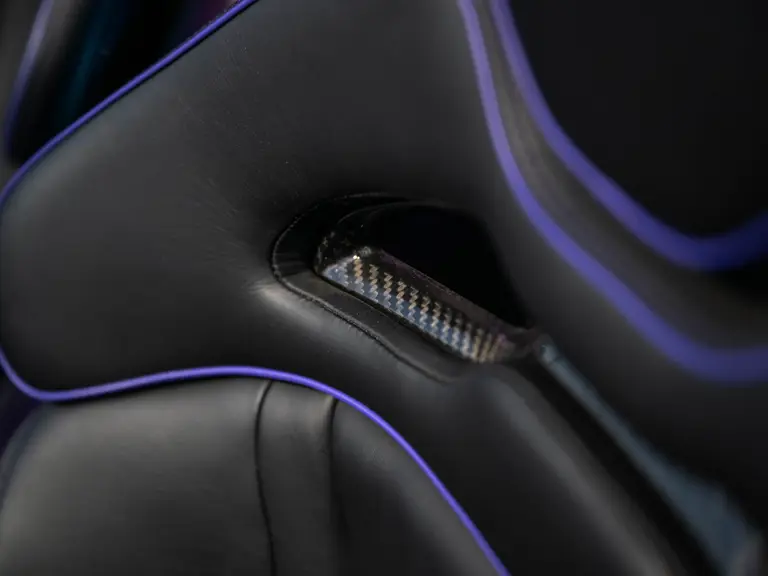

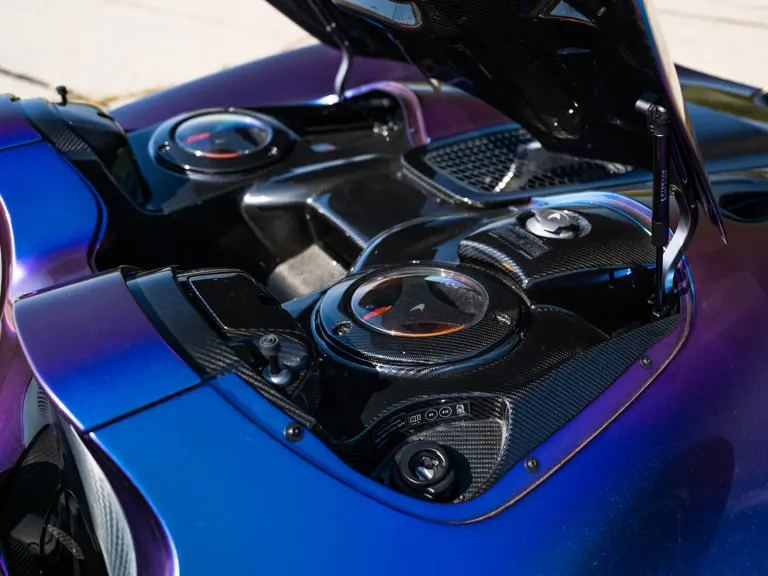

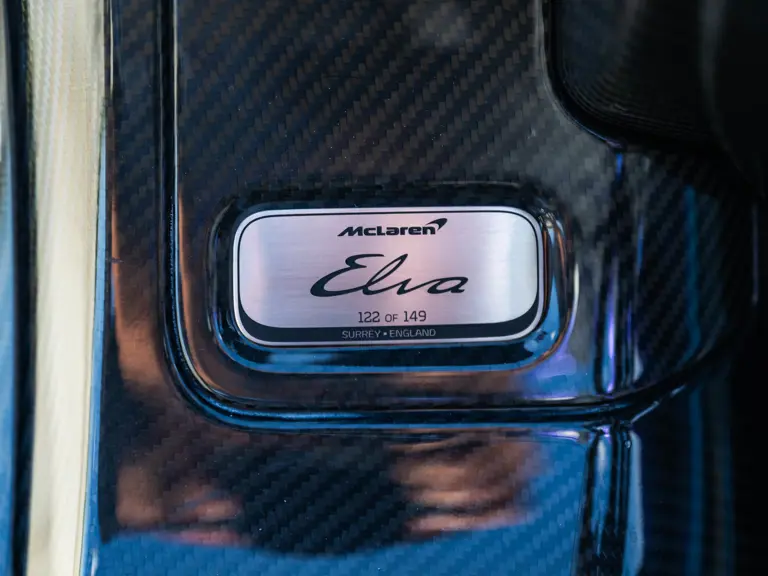

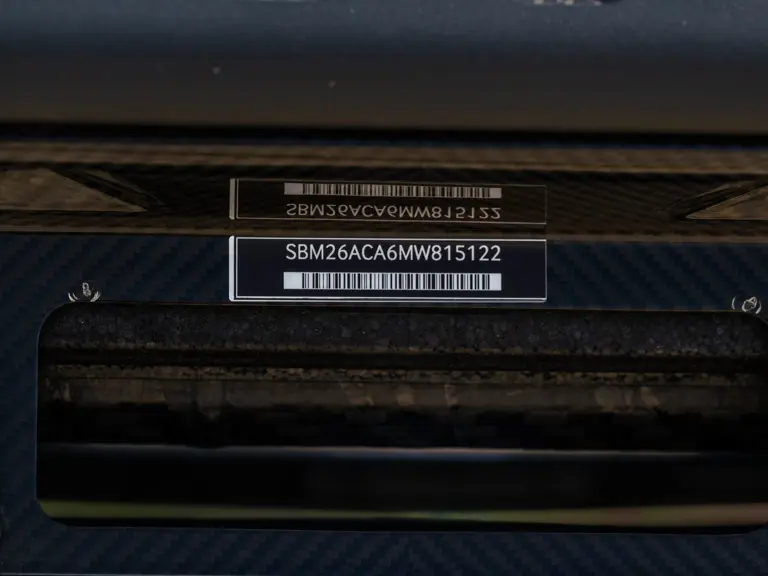
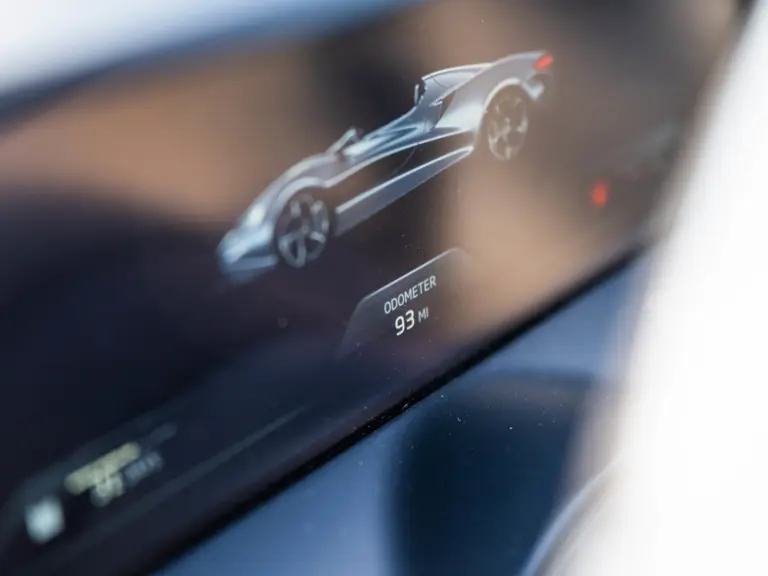
 | Las Vegas, Nevada
| Las Vegas, Nevada

